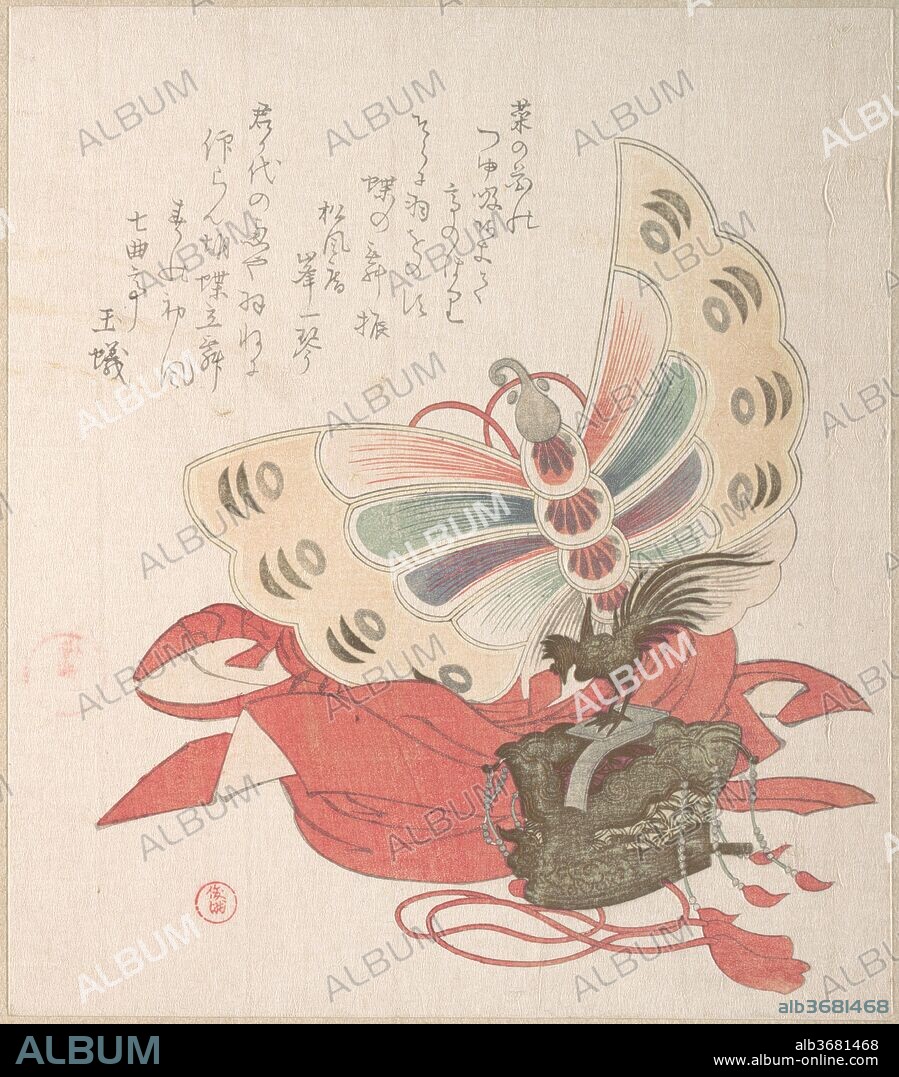alb3681468
KUBO SHUNMAN. Spring Rain Collection (Harusame shu), vol. 2: Costume for the Butterfly Dance (Kocho no mai)

|
Add to another lightbox |
|
Add to another lightbox |



Buy this image.
Select the use:

Author:
Title:
Spring Rain Collection (Harusame shu), vol. 2: Costume for the Butterfly Dance (Kocho no mai)
Caption:
Spring Rain Collection (Harusame shu), vol. 2: Costume for the Butterfly Dance (Kocho no mai). Artist: Kubo Shunman (Japanese, 1757-1820). Culture: Japan. Dimensions: 8 5/16 x 7 1/4 in. (21.1 x 18.4 cm). Date: 1810s.
Surimono are privately published woodblock prints, usually commissioned by individual poets or poetry groups as a form of New Year's greeting card. The poems, most commonly kyoka (witty thirty-one syllable verse), inscribed on the prints usually include felicitous imagery connected with spring, which in the lunar calendar begins on the first day of the first month. Themes of surimono are often erudite, frequently alluding to Japanese literary classics in both texts and images.
For the Butterfly Dance (Kocho no mai), performers don ornate crowns and colorful costumes resembling butterfly wings. Originally performed as a court dance (bugaku), the Butterfly Dance was eventually incorporated into the noh and kabuki repertoires.
Technique/material:
Privately published woodblock prints (surimono) mounted in an album; ink and color on paper
Period:
Edo period (1615-1868)
Museum:
Metropolitan Museum of Art, New York, USA
Credit:
Album / Metropolitan Museum of Art, NY
Releases:
Model: No - Property: No
Rights questions?
Rights questions?
Image size:
3499 x 3987 px | 39.9 MB
Print size:
29.6 x 33.8 cm | 11.7 x 13.3 in (300 dpi)
 Pinterest
Pinterest Twitter
Twitter Facebook
Facebook Copy link
Copy link Email
Email
